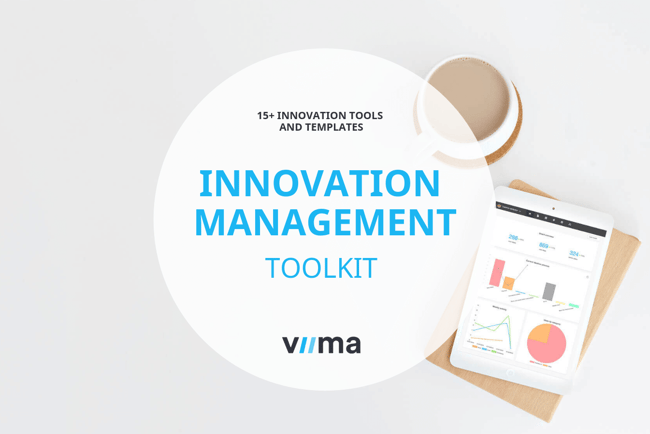What is the 70-20-10 Rule of Innovation and How to Use It
Innovation comes with many challenges. One of the most common is the allocation of resources to innovation. The 70-20-10 model has been used by some of the biggest corporate giants as a rule of innovation. But can you replicate this ratio in your own organization?
Let's find out! Today we'll investigate the 70-20-10 concept, its benefits and challenges and whether you can use if for a more strategic distribution of resources.
Table of contents
What is the 70-20-10 rule?
While often called “the rule of innovation”, 70-20-10 is not really a rule, but rather a rule of thumb. You should take upon yourself to alter the ratios according to your company’s profile and needs. This is because success in innovation looks different for each company and internal structures, as well as external factors can influence the balance.
Google can swear by this formula, as Eric Schmidt and Sergey Brin used the 70-20-10 principle throughout their organization to bolster their innovation efforts. With this as a guide, the company is investing 70% of resources and human capital in the core business, 20% in the new developments and 10% on new ideas that might seem crazy at first.
That being said, organizations shouldn’t strive for the perfect 70-20-10 balance, but adjust it to distribute resources across the “core”, “adjacent”, and “transformational” initiatives. If you’ve been reading our articles on innovation management you’re probably already familiar with all these concepts. If you are new around here, we’ll explain this briefly.
The core, adjacent, and transformational innovation initiatives are what Bansi Nagji and Geoff have put together under the “ambition matrix”.
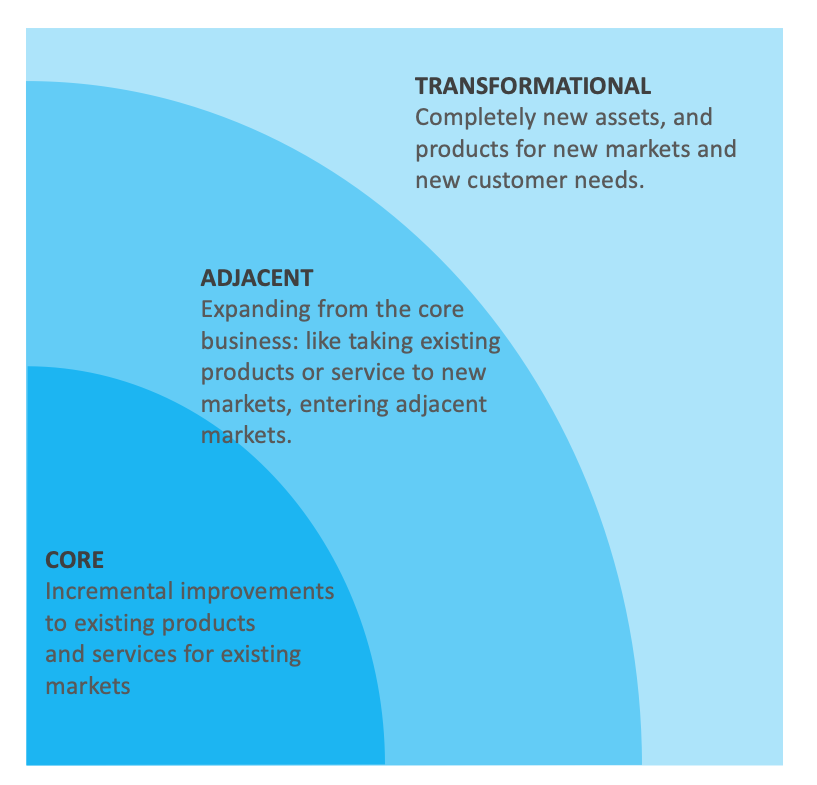
- Core innovation initiatives refer to the incremental improvements to existing products and services that companies usually allocate most of their resources.
- Adjacent innovations can include existing products that are taken to new markets like geographical expansions. These initiatives are usually based on existing capabilities that are taken to new horizons.
- Transformational initiatives are completely new offerings, services, products or even a new business that serves a new market. These are the hardest to get right and they are usually the breakthrough innovations that make the headlines.
How does 70-20-10 work in practice?
This “Golden Ratio” was later proven in a study which shows that what Google is doing seems to bring results in other companies too. Those that allocate resources similarly, usually outperform their peers by a margin of 10-20%.
These results are not necessarily due to the exact 70-20-10 ratio, but they are rather an indicator of how the balance between short-term predictable growth and long-term riskier projects can have an impact on a company’s performance.
This approach works for companies that manage innovation strategically, deliberately targeting a healthy ratio they believe to be ideal to deliver a better ROI.
For example, a medium sized company with a steady revenue that wants to maintain its leading position on the market will focus on the core initiatives and remove the risk that comes with transformational activities. So, in practice it would have an 85-15-0 ratio.
However, this approach is just a short-term solution, reflecting the innovation stage of the company. On the long term, it would affect the overall performance of the company, so once they move to another stage, they should alter the ratio and close the gap between the three areas. It’s not easy, but managers need to strive for a healthy balance that includes all three levels of innovations.
The return ratio is generally the inverse of the resource allocation in the 70-20-10 rule.
More interesting data was revealed by another research from HBR focused on the return of innovation. It seems that the return ratio is generally the inverse of the resource allocation in the 70-20-10 rule. This means that the return on core innovations is 10%, the one on adjacent is 20% and the one on transformational innovation brings the highest return of 70%.
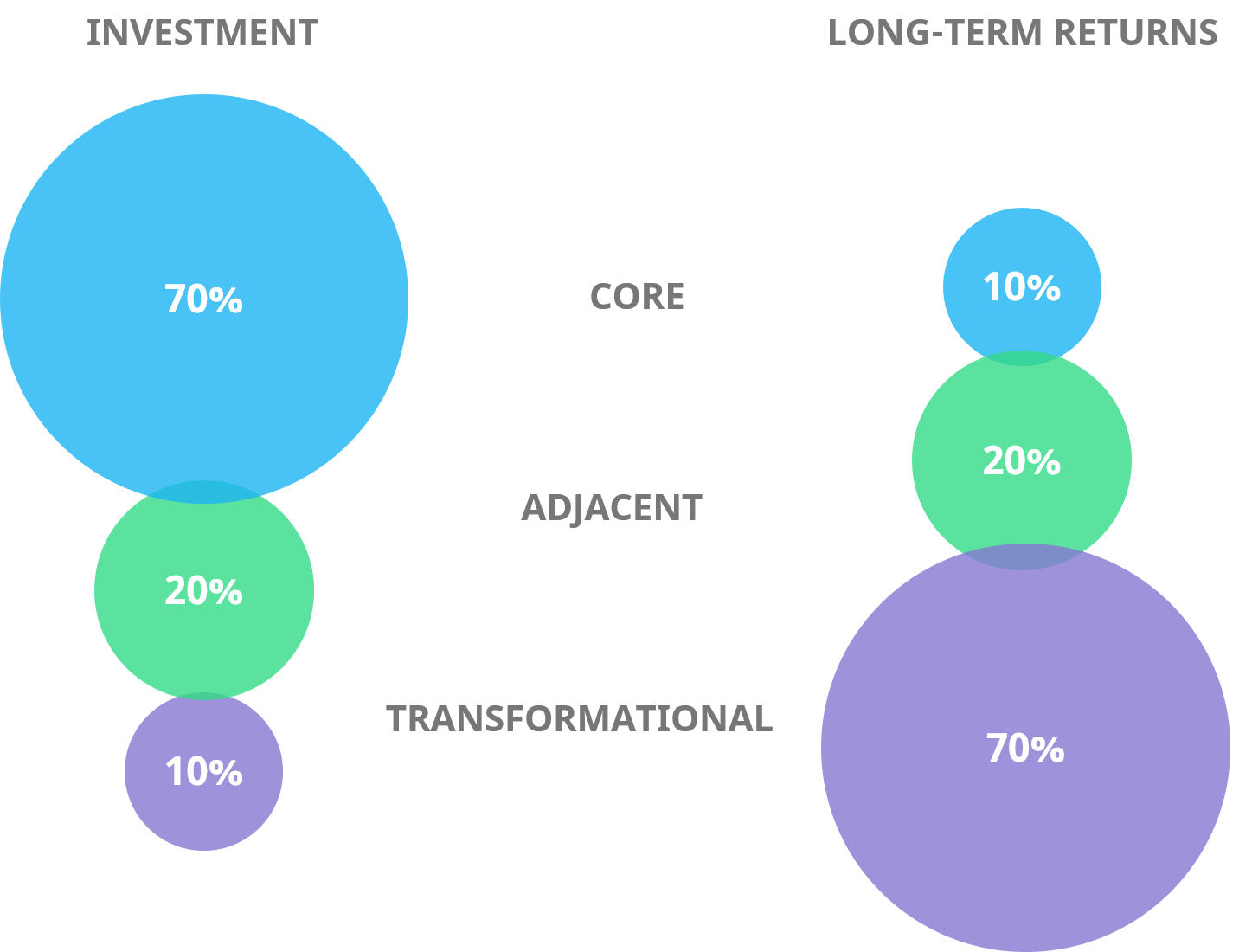
The ambition matrix is in effect the merger of the three horizons of growth developed by McKinsey & Company and the 70-20-10 allocation model.
What are the three horizons of growth? The three horizons of growth model has mostly been used for prioritizing innovation initiatives by working on improving performance while considering potential opportunities for growth.
- Horizon 1 (innovations to the core): initiatives related to the core business that bring the greatest profit and are deployed in less than a year.
- Horizon 2 (adjacent initiatives): emerging opportunities that can bring substantial profits but can take up to 3 years to develop and implement.
- Horizon 3 (transformational innovations): ideas for potential growth along the way like creating new capabilities, pilots, new businesses and disruptive opportunities. These traditionally used to be long-term initiatives that require more than 3 years to be developed.
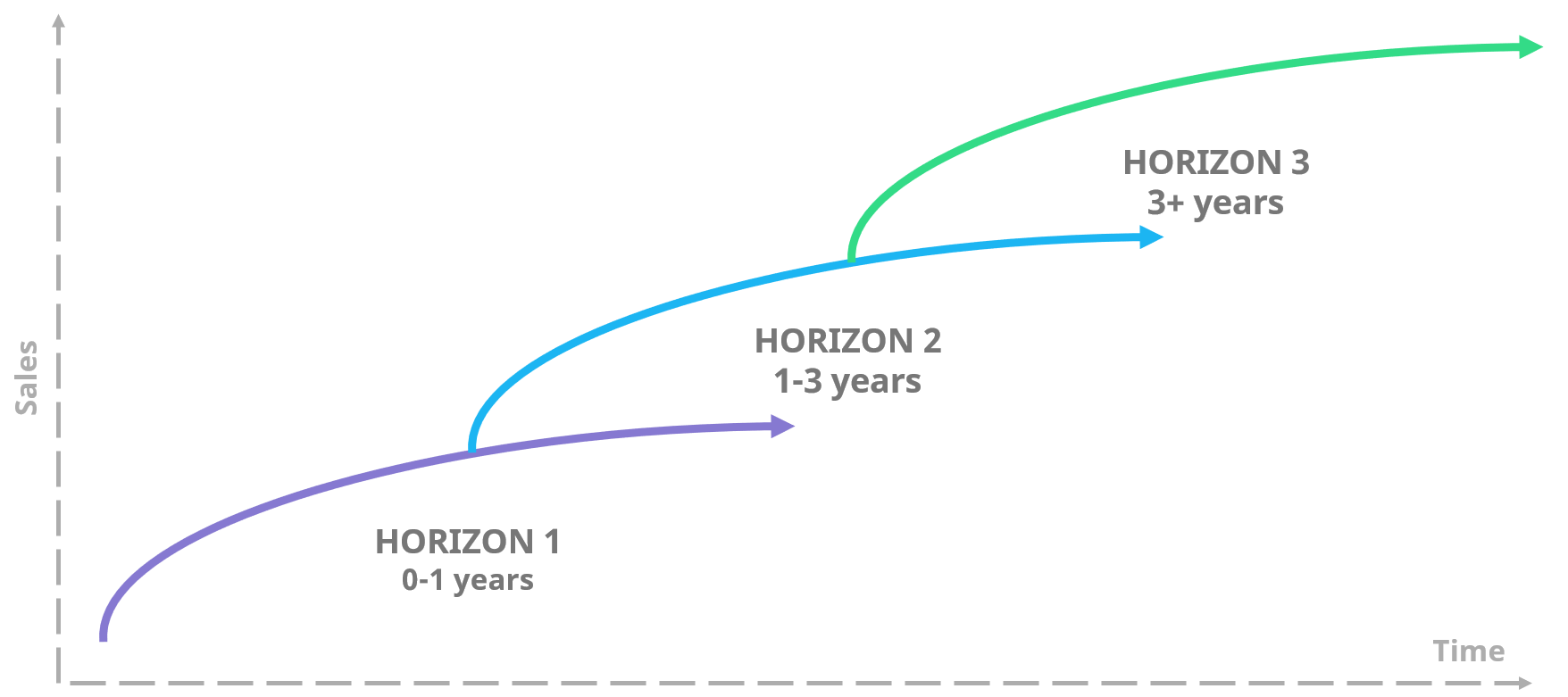
Since this theory first came out in 2009 things have changed a bit and as Steve Blank points out, these days Horizon 3 projects, meaning the breakthroughs, are very often deployed way faster than they used to 10 years ago.
However, we still believe the three horizons of growth can work as a compass to help you find the right balance between all your innovation initiatives and work your way through building a solid innovation portfolio. The 70-20-10 rule together with the three horizons of growth can be visualized in this chart: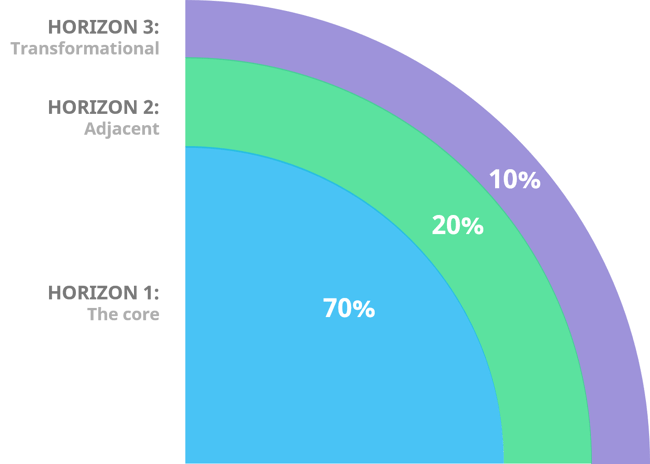
The benefits of using the 70-20-10 rule
Even though the 70-20-10 is not a silver bullet by any means, it does provide a more structured way of managing innovation, instead of hoping for the best results through trial and error. When you figure out how to manage innovation and coordinate all the efforts, you’ll start to see the benefits as well.
So, what to expect and what to hope for when you get started with this model?
-
Systemize innovation
Few companies can say they excel at managing innovation throughout the core, adjacent and transformational areas.
One of the reasons is that they are not so orderly in their operations and don’t have an overview of all projects and initiatives. Innovation should be considered as a whole, a portfolio that needs to be managed.
This requires a system through which they prioritize and allocate resources. A great benefit of the 70-20-10 rule is that companies have the chance of becoming more disciplined with their operations.
Inherent biases prevent leaders from investing across all three horizons. Already established companies that do well in their core business, can’t always see the benefits of investing in new ideas.

As mentioned, on the long term, this will affect the longevity of their business. Instead, such companies should consider using the 70-20-10 approach to decide how to allocate budget and resources towards new areas that can lead to sustained great performance across all three horizons.
This way leaders are guided into allocating budgets and resources in areas they might not have considered before.
-
Build innovation habits and communicate its importance
Managers in innovative companies consciously allocate greater proportion of resources to new initiatives and ideas that enable breakthrough innovations. As a manager you have the power (and the responsibility) to inspire and enable innovative behavior by providing employees the right capabilities to succeed.
Leaders must always clearly communicate their innovation goals. If there is no process in place for this, then things can slip between the cracks. However, when you decide to consider more than your core business and start investing in other areas as well, you start with a process.
With the 70-20-10 rule you start making practical changes in the way innovation is addressed in your organization. Along with this, you’ll start building the habit of communicating the goals and performance of new initiatives. It also gives a way of discussing the ambitions of the innovation portfolio, which takes us to our next point.
-
Manage innovation as a portfolio
Thanks to this allocation model, the ideas you might have forgotten about or ignored, can now surface, and turn into assets. Managing innovation as a portfolio means that you can manage the balance of investments in the company’s initiatives and support future growth. Even more, innovation becomes more predictable because when you have several projects to consider it’s easier to make more reliable forecasts.
As John Carter was recently explaining, you should consider the innovation potential of all the new, emerging ideas and bring them under the same umbrella. If you take all these vague ideas and manage them as potential products of your portfolio you can clarify concepts and reduce risk early in the process.
If you take all these vague ideas and manage them as potential products of your portfolio you can clarify concepts and reduce risk early in the process.
How to get started with the 70-20-10 model?
As mentioned, the exact ratio of 70-20-10 is a good starting point, but not necessarily the right answer for everyone. When you are pursuing innovation deciding where and how to allocate resources is very important. So, where do you start?
- Assess your current situation. Where are you in the innovation life cycle, how does your environment look and where you position yourself.
- Start with the blank canvas: your vision for the future. What are your short and long term objectives in terms of innovation and growth? After you’ve reached an agreement, you go ahead with the next steps.
- Next, draw a strategy. It doesn’t have to be very specific. It can be a simple high-level strategy that includes your goals and priorities. With this overview you can decide what to prioritize using the 70-20-10 model.
- Create your actionable plan based on the previous steps and include the goals and the ratios you’ve set earlier.
- Implement and scale. After you have decided on the steps for implementation, and you start seeing some results, you can scale. This is an important step during which you should communicate the changes. Make sure there is a common understanding of what the new approach means for those involved and for the company at large.
- Analyze, adapt, iterate. Take your time with all these steps and don’t rush into it. This will give you enough time and data to check on the performance of your changes. Consider the aforementioned steps and see what needs to be tweaked.
Key challenges of the 70-20-10 model
By following the 70-20-10 rule you can get closer to making innovation the new norm in your organization. We know it’s easier said than done but in order to succeed it’s also good to be aware of some of the most common challenges and setbacks. To help you along the way we compiled a list with these challenges as well as some possible workarounds.
-
Organizational structures
When it comes to a widespread practice that involves a specific distribution of resources, be it human capabilities, financial assets, or time, it’s rarely one single ratio that can apply throughout an entire organization.
Different departments have different processes and are led by people with very different skillsets. For example, people working on the core and adjacent innovations won’t have the same skills as those working on transformational innovations.
Different functions play different roles in the big picture so it’s impossible to calculate to the last detail how much to allocate for each area.
So, our suggestion is to come up with high level figures that will help you estimate the final ratio. This will save you time and money and the outcome won’t be different.
-
Finding the right ratio
Even though it’s called the 70-20-10 rule, for you it can just as well be the 85-10-5 or the 45-40-15 rule. The average ratio applies to many, stable companies, but it doesn’t mean you have to apply it blindly. Start with this then tweak it consciously, after you’ve closely analyzed all important factors.
For example, in their study, HBR noted that the industry that came closer to the 70-20-10 ratio is the industrial manufacturing one, which has a strong focus on core innovation and some breakouts too.
On the other hand, technology companies don’t focus so much on the core products as their market is moving faster and is always expecting something new and different. On paper, these variants look like this:
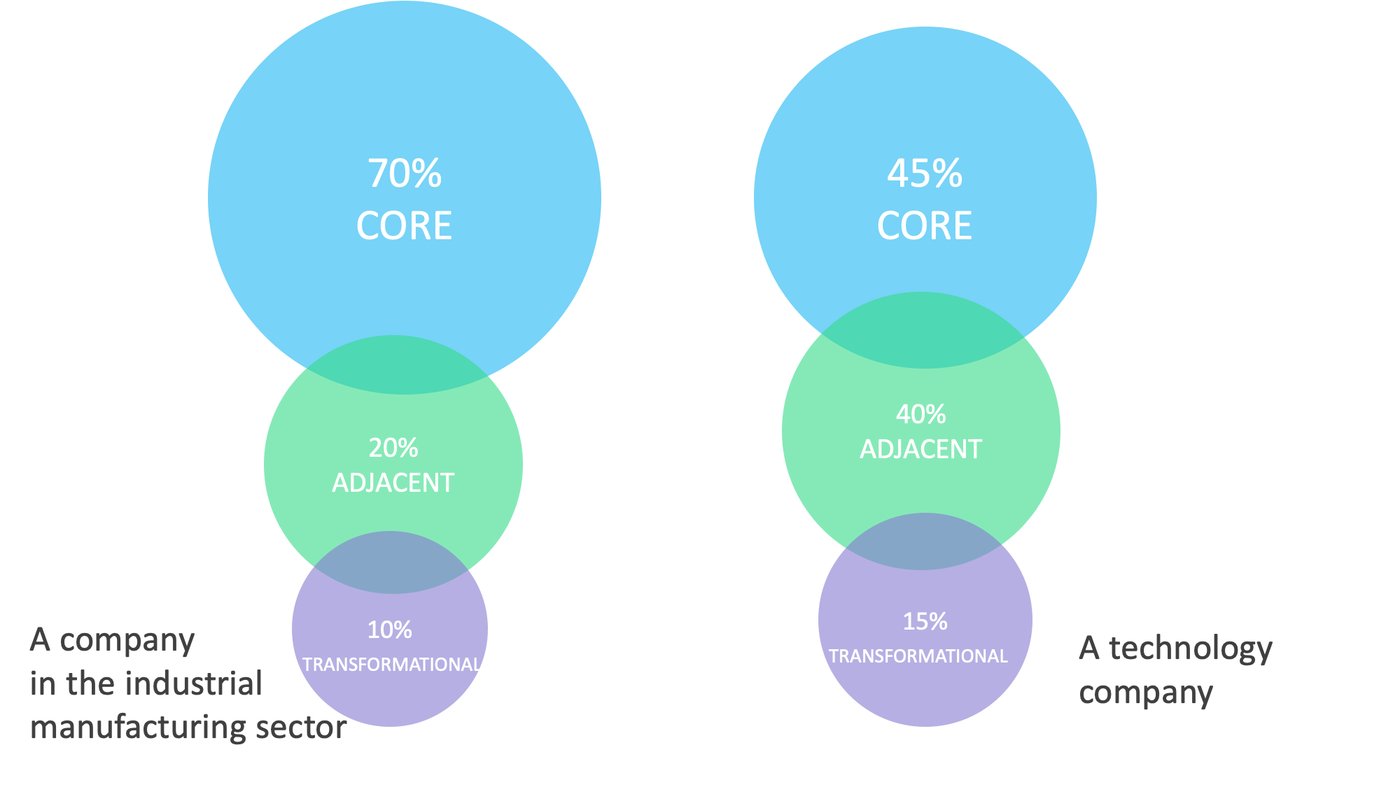
Our advice? Look at your industry, how are you competing with the others, what are your resources, what to change in how you allocate resources? Consider the steps we mentioned before, and you should be fine.
-
Actionability
This challenge is not as discouraging as it might sound. In fact, it might help you decide if this is the approach for you.
The practical challenge with this model is that it doesn’t give you solutions since it’s more of an abstract concept. However, it does offer a new perspective on managing your innovation resources and makes you think of what you might have missed, like innovating outside the core and developing new projects.
Let’s say you’ve used this model to decide on resource allocation. Naturally, the next step is to put that into practice. You’ve decided to invest 7% or 10% into something completely new.
You have some new ideas, but you don’t know what could work, what ideas to choose or how to go forward with them. Even more, there is no guarantee that your investment is worth the trouble and the money.
So, in reality, the 70-20-10 model doesn’t provide practical guidance. It just helps you frame, communicate, and measure your strategy.
The 70-20-10 model doesn’t provide practical guidance, but it helps you frame, communicate, and measure your strategy.
However, before dismissing the 70-20-10 model, think of how a new perspective can help your organization. Once you’ve decided on a ratio distribution, choose a tool for evaluating, prioritizing, and managing ideas. A tool like Viima can help you turn those abstract percentages into reality.
-
Not managing risks pragmatically
When you decide to make changes in how you distribute resources internally, you might be reluctant, with good reason, to invest in ideas that seem a bit far-fetched. Risk is a challenge for many, but not taking risks is the biggest risks of all.
Don’t get us wrong, this doesn’t mean that you should bet big without any indication of success. That is just madness, not smart risk-taking.
Even though innovation involves some risks, you can still be pragmatic about it. For example, you can test the feasibility of a new idea on a smaller scale by investing a small amount. If there’s any evidence of success you can increase your investment.
By testing crucial assumptions early on you minimize risk of costly failures. This is how great innovators operate, with an iterative process in place that supports accelerated learning. In return, this provides them with more resources for projects that can create value.
To help you decide the ratio of the 70-20-10 model and the risks you are ready to take, consider the innovation lifecycle.
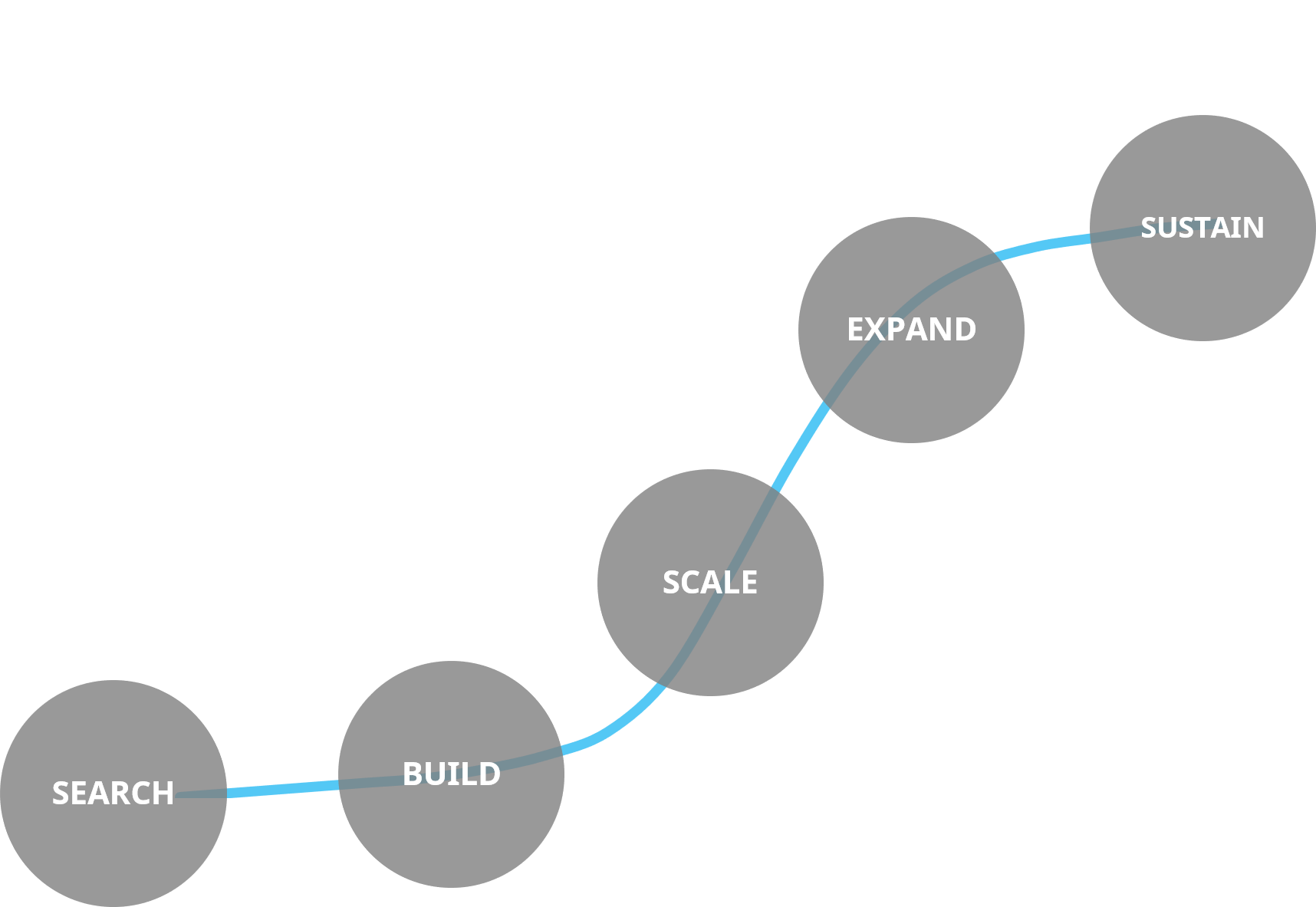
For example, a new company is in the search and build stages so they might allocate 80% of their resources to improving their core business and 20% to entering towards new markets.
However, a company that has reached the expand phase, will want to stay competitive and start shifting their focus towards development and new ideas. This means they could have 65% on the core, 30% on development and 5% on new, breakthrough initiatives.
You probably got the idea, so we’re not getting into too much detail here as the innovation lifecycle topic is beyond the scope of this article, and we previously covered it on innovation management article.
Conclusion
Managing innovation often means juggling one too many projects at once, and centralizing innovation tends to be a recipe for failure. Instead, to make innovation work you have to spread it throughout the entire organization. Then you can decide how to divide it. That’s why an approach like the 70-20-10 model can be a great tool to start with.
However, it’s good to remember that even if the 70-20-10 principle is not a perfect solution and it’s not for everyone, it’s still a practical tool for planning and communicating innovation within larger organizations.
Even though it’s easier and more appealing to just improve on your most profitable core products and services, if you want to remain competitive, you need to consider innovation as your main driver for growth. Whether you apply the 70-20-10 principle as such or not, it’s still great step ahead for an innovative frame of mind.
The 70-20-10 rule can help you start with innovation management but for a more in depth guide on how to do it right, you can download our innovation management toolkit that comes with loads of innovation tools and templates. Good luck!
Interested in Innovation and Leadership?
Subscribe to our blog to get the latest stories on innovation, leadership and culture straight to your inbox.




